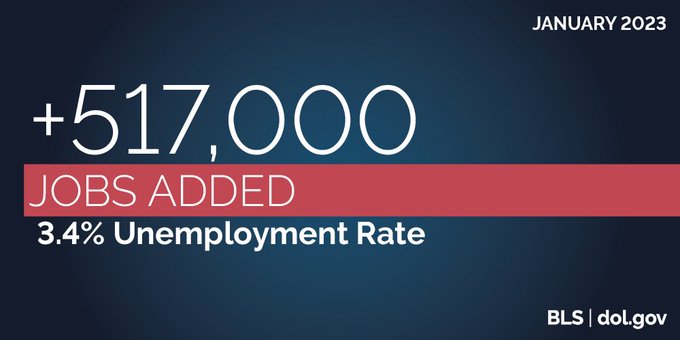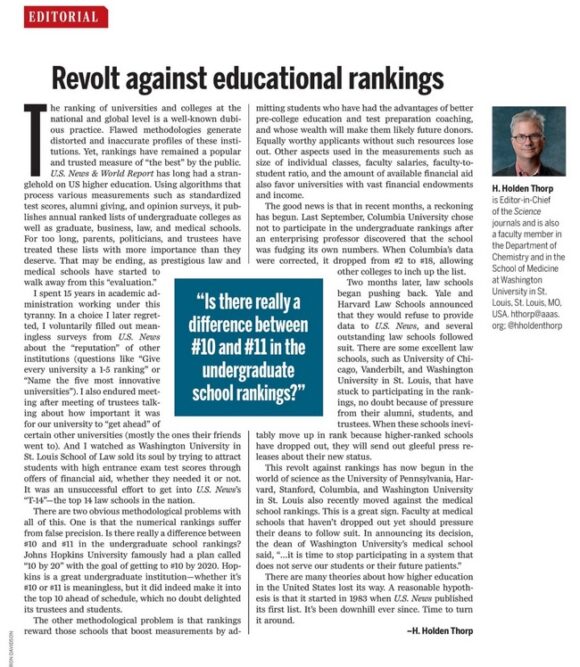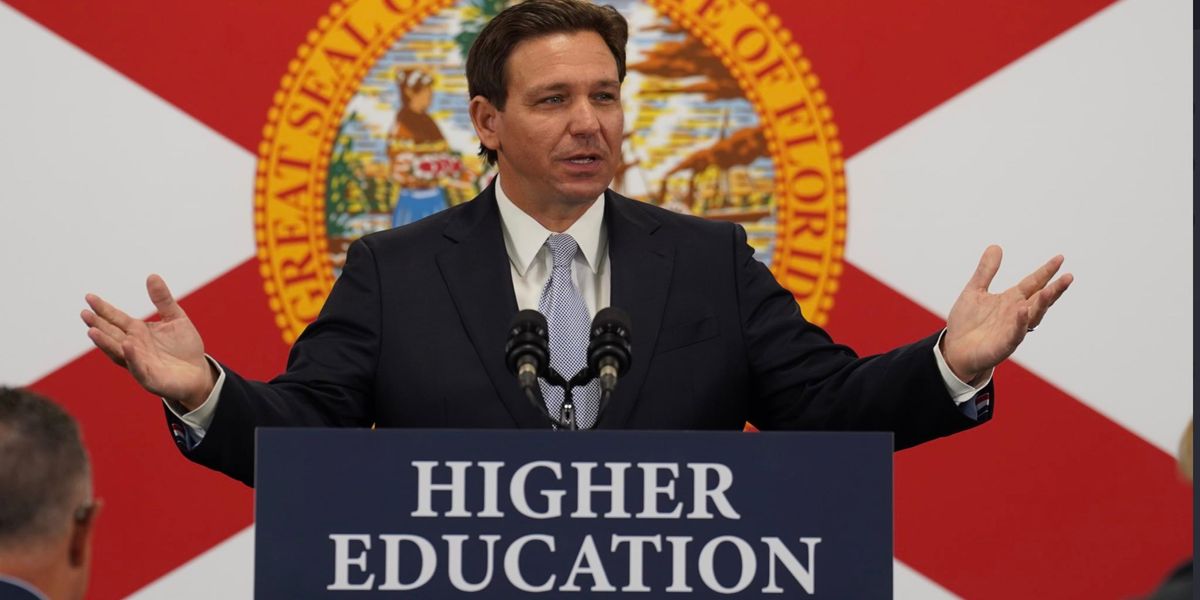
Dear Commons Community,
The College Board released yesterday a revised curriculum for its new Advanced Placement course in African American Studies — stripped of much of the subject matter that had angered Florida Governor Ron DeSantis and other conservatives.
The College Board purged the names of many Black writers and scholars associated with critical race theory, the queer experience and Black feminism. It ushered out some politically fraught topics, like Black Lives Matter, from the formal curriculum.
And it added something new: “Black conservatism” is now offered as an idea for a research project. As reported by The New York Times.
When it announced the A.P. course in August, the College Board clearly believed it was providing a class whose time had come, and it was celebrated by eminent scholars like Henry Louis Gates Jr. of Harvard as an affirmation of the importance of African American studies. But the coursequickly ran into a political buzz saw — first from conservatives after an early draft leaked to conservative publications like The Florida Standard and National Review. And then, once the curriculum was released on Wednesday, some academics and liberal groups protested the changes.
The dispute over the A.P. course is about more than just the content of a high school class. Education is the center of much vitriolic partisan debate, and the College Board’s decision to try to build a curriculum covering one of the most charged subjects in the country — the history of race in America — may have all but guaranteed controversy. If anything, the arguments over the curriculum underscore the fact that the United States is a country that cannot agree on its own story, especially the complex history of Black Americans.
The pushback began in January, when Governor DeSantis of Florida, a Republican who is expected to run for president, announced that he would ban the curriculum, citing the draft version. State education officials said it was not historically accurate and violated state law that regulates how race-related issues are taught in public schools.
The attack on the A.P. course turned out to be the prelude to a much larger agenda. On Tuesday, Mr. DeSantis unveiled a proposal to overhaul higher education that would eliminate what he called “ideological conformity” by, among other things, mandating courses in Western civilization.
In another red flag to the College Board, there was the possibility of other opposition: more than two dozen states have adopted some sort of measure against critical race theory, according to a tracking project by the University of California, Los Angeles, law school.
David Coleman, the head of the College Board, said in an interview that the changes were all made for pedagogical reasons, not to bow to political pressure. “At the College Board, we can’t look to statements of political leaders,” he said. The changes, he said, came from “the input of professors” and “longstanding A.P. principles.”
Moreover, College Board officials said ysterday that they had a time-stamped document showing that the final changes to the curriculum were made in December, before the Florida Department of Education sent its letter informing the College Board that it would not allow the course to be taught.
Mr. Coleman said that during the initial test of the course this school year, the board received feedback that the secondary, more theoretical sources were “quite dense” and that students connected more with primary sources, which he said have always been the foundation of A.P. courses.
“We experimented with a lot of things including assigning secondary sources, and we found a lot of issues arose as we did,” he said. “I think what is most surprising and powerful for most people is looking directly at people’s experience.”
After the curriculum was released Wednesday, Bryan Griffin, the press secretary for Mr. DeSantis, said the state education department was reviewing it for “corrections and compliance with Florida law.” Florida already requires the teaching of African American history.
In light of the conservative criticism, the College Board seemed to opt out of the politics. The revised 234-page curriculum framework ranges widely through content on Africa, slavery, reconstruction and the civil rights movement. And there is content on redlining, discrimination and Afrofuturism, as well as stories of individual achievement and heroism
But the study of contemporary topics — including Black Lives Matter, incarceration, queer life and the debate over reparations — is downgraded. The subjects are no longer part of the exam, and are simply offered on a list of options for a required research project.
And even that list, in a nod to local laws, “can be refined by local states and districts.”
The expunged writers and scholars include Kimberlé W. Crenshaw, a law professor at Columbia, which touts her work as “foundational in critical race theory”; Roderick Ferguson, a Yale professor who has written about queer social movements; and Ta-Nehisi Coates, the author who has made the case for reparations for slavery. Gone, too, is bell hooks, the writer who shaped discussions about race, feminism and class.
After the curriculum was released, Professor Crenshaw said that even if her name and others had been taken out of the curriculum because secondary sources — theorists or analysts — were being eliminated in favor of facts and lived experience, the decision sent a troubling message. “I would have made a different choice,” she said. “Even the appearance of bowing to political pressure in the context of new knowledge and ideas is something that should not be done.”
But she said she was also disappointed because she had believed the course would capitalize on a hunger of young students to learn “ways of thinking about things like police brutality, mass incarceration and continuing inequalities.”
Instead, she said, “the very same set of circumstances that presented the need for the course also created the backlash against the content that people don’t like.”
David Blight, a professor of American history at Yale University, said yesterday that he had written an endorsement of the new curriculum, at the College Board’s request, and that he believed it had much to offer not just about history but also about Black poetry, art and the origins of the blues, jazz and hip-hop. But he withdrew his endorsement after learning that some sections had been cut.
“I withdrew it because I want to know when and how they made these decisions to excise these people, because that’s also an attack on their academic freedom,” Dr. Blight said.
PEN America, a free speech organization, echoed that concern. While the College Board had said the changes were not political, the board “risked sending the message that political threats against the teaching of particular types of content can succeed in silencing that content,” said Jeremy C. Young, senior manager of free expression and education at PEN America.
The changes were also condemned by the National Parents Union and CFT, a California affiliate of the American Federation of Teachers, representing education workers from childhood through higher education.
Dr. Gates, who was a consultant to the curriculum, said he was “sorry that the College Board’s policy is not to require secondary sources in its curricula.” He teaches Harvard’s introduction to African American studies, “and academic subjects such as ‘Intersectionality’ and critical race theory, the 1619 Project, reparations for slavery, Black homophobia and antisemitism are fair game, of course, for such a class,” he said in an email. The 1619 Project is an initiative by The New York Times.
Some conservatives were not completely mollified, either. Ilya Shapiro, director of constitutional studies at the Manhattan Institute, said he did not object to topics like the Black Panthers and the Black is Beautiful movement being included because “that’s certainly part of what was America.”
But after seeing the framework, he faulted it for omitting conservative or independent Black thinkers like John McWhorter, Shelby Steele, Thomas Sowell and Justice Clarence Thomas of the Supreme Court.
“Maybe further changes could be made,” he said. “Even though they said they’re not responding to the specific concerns that Florida raised, it very much looks like they’re addressing the letter of them by making them optional.”
A.P. exams are deeply embedded in the American education system. Students take the courses and exams to show their academic prowess when applying to college. Most four-year colleges and universities grant college credit for students who score high enough on an A.P. exam. And more than a million public high school students graduating in 2021 took at least one A.P. exam.
But the fracas over the exam raises questions about whether the African American Studies course, as modified, fulfills its mission of mimicking a college-level course, which usually expects students to analyze secondary sources and take on contentious topics.
Chester E. Finn Jr., a senior fellow at Stanford’s Hoover Institution, said the College Board had come up with a smart strategy by not eradicating the “touchy parts,” but rather making them optional.
“DeSantis likes to make noise and he’s running for president,” Mr. Finn said. “But they’ve been getting feedback from all over the place in the 60 schools they’ve been piloting this in. I think it’s a way of dealing with the United States at this point, not just DeSantis. Some of these things they might want to teach in New York, but not Dallas. Or San Francisco but not St. Petersburg.”
The College Board got down on a bended knee with these revisions!
Tony










